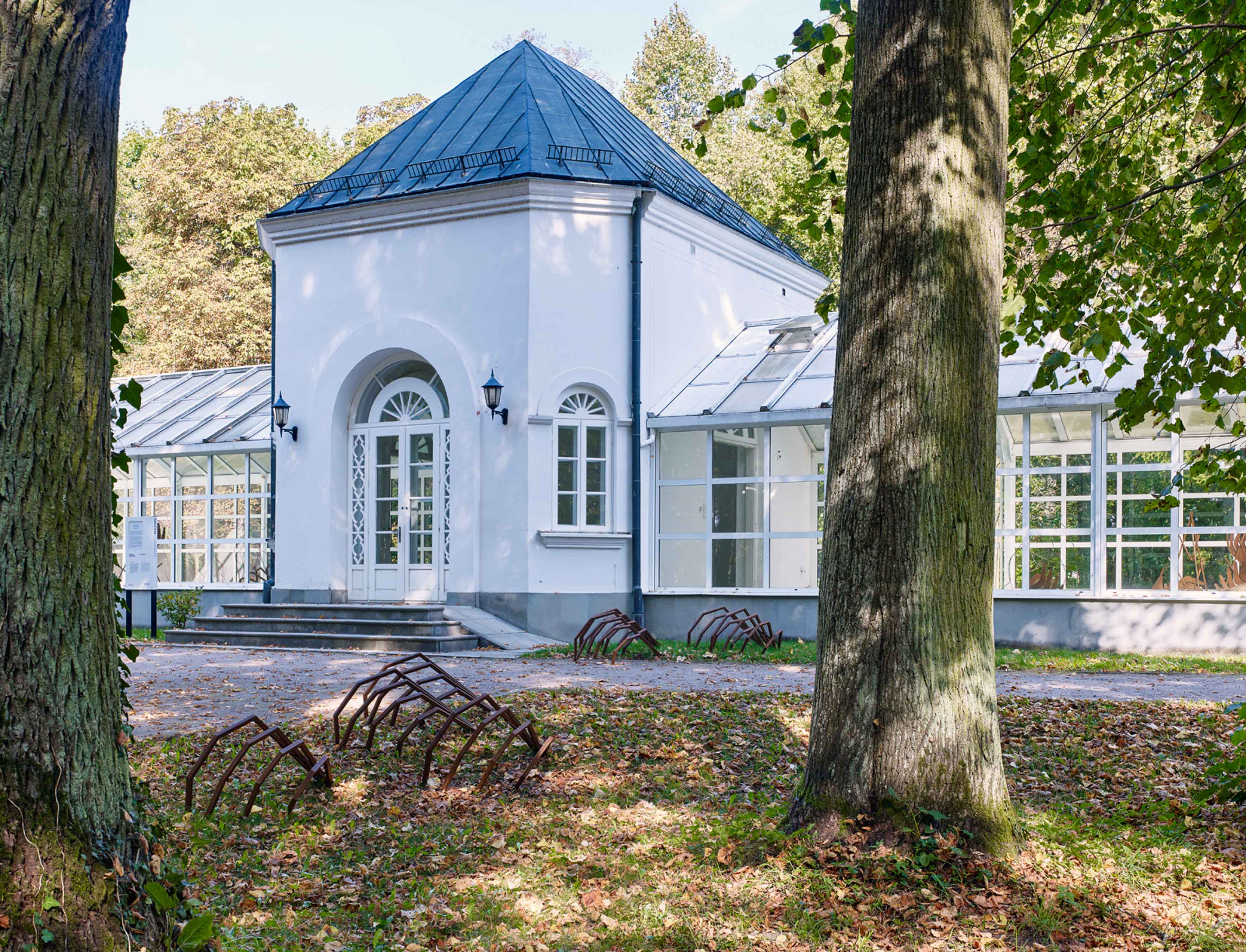YYYYMMDD >>> BACK HOME <<< >>> SELECTED FEATURES <<< >>> HIDDEN ARCHIVE <<<
[20231016]
THEM with works by ZUZA GOLIŃSKA and IZA TARASEWICZ at CENTRE OF POLISH SCULPTURE curated by STANISŁAW MAŁECKI [from 20230909 to 20231105]
[Photos: Błażej Pindor]






















One/Them For several decades now, one of the main reasons for the escalating effects of climate change has been the failure of multinational corporations and national governments to take real action. For those at the top, the need to maintain influence and profit at all costs is of paramount importance, which, in the next few decades, could even bring humanity to the brink of self-destruction.
But the act of dissent against such a vision of the future is already emerging among groups whose voices are marginalised in the public debate. Local farming communities, workers who are losing their jobs, or residents of smaller towns and villages who see the areas they live in being degraded are just some of the communities that may become even more vocal in their opposition to decision-makers who are hostile to the changes that need to be made. By communicating the impact of climate catastrophe on specific regions, it is possible to capture the imagination of smaller communities and inspire them to stand up. The hope of building a better future can be born from within the grassroots communities that are forming, ready to express their anger and opposition to the catastrophe that is already taking place in their immediate surroundings.
Zuza Golińska and Iza Tarasewicz’s first joint exhibition explores the conditions under which a collective voice of resistance emerges. Both sculptors analyse global issues in a local context, while building relationships with the communities they co-create.
Although Zuza Golińska lives in Warsaw, she often returns to her hometown of Gdańsk, where she creates steel sculptures in her workshop on the site of a former shipyard. Confronting the myth of the male worker, the artist breaks with the stereotypical gender roles ingrained in our culture. By transforming industrial materials, she makes a direct reference to the history of her own family, whose members were employed in the maritime industry.
Iza Tarasewicz, who works in her hometown, Kolonia Koplany near Białystok, touches on themes such as the rhythm of work and the changes taking place in the Polish countryside. Her projects are preceded by detailed research into the history of peasant farmers.
Using abstract language and introducing the recording of movement into their works, the artists build a story about relations between social groups and their dependence on the surrounding environment.
Rachitic and saturated with colour, Zuza Golińska's Insekty (Insects) form abstract drawings in space and charge it with a record of dynamic movement. This restless swarm creates a vision of the not-too-distant future, in which insects may acquire completely different functions. Does the group of objects represent a plague of locusts devouring the harvest of human labour, is it cultivated food in the form of insects, or perhaps robotic insect hybrids replacing now-extinct pollinators?
Iza Tarasewicz’s group of objects entitled Objawienie mocy / Revelation of Powers echoes the resistance of peasant communities. The artist found inspiration for her oxidised steel works in historical peasant revolts and the popular utopias they created. The work as a whole, like a barricade suspended in stroboscopic motion, is also about the dynamics of protest and the power of grassroots involvement. Tarasewicz’s project is a visual fixation of the cycle of daily, monotonous agricultural work, or the repetition of the mazurka rhythm, indicating the artist’s inspiration by choreology, which deals with methods of graphic representation of folk dances. In the current context of the struggle against drought and the lack of access to natural harvests for many societies, this work considers contemporary issues of global food distribution, the blocking of grain supplies from Ukraine by Russian invaders, and migrants attempting to cross the Polish-Belarusian border.
Created in the space of the Orangery, the installation by the two artists is an ambivalent story that shows the difference in the interpretation of phenomena between the global and the local context. The statement of the work, expressing the artists’ belief in collective agency and the possibility of unheard communities to rebel, was combined with a reflection on the ambiguous struggle of the elements leading our species towards disaster.
Finally, the title of the exhibition is taken from a 1954 film by Gordon Douglas entitled Them! Its plot tells the story of deadly man-eating ants created as a result of a nuclear explosion. Although this camp classic, with its naive special effects, may leave contemporary viewers with a rather ironic smile on their faces, it deals with the perennial problem of the extinction of our species caused by the effects of invasive human activity.
[Text: Stanisław Małecki]
©YYYYMMDD All content and design by Daniela Grabosch + Ricardo Almeida Roque unless otherwise stated. Images, Videos and Texts can only be used under permission of the author(s).